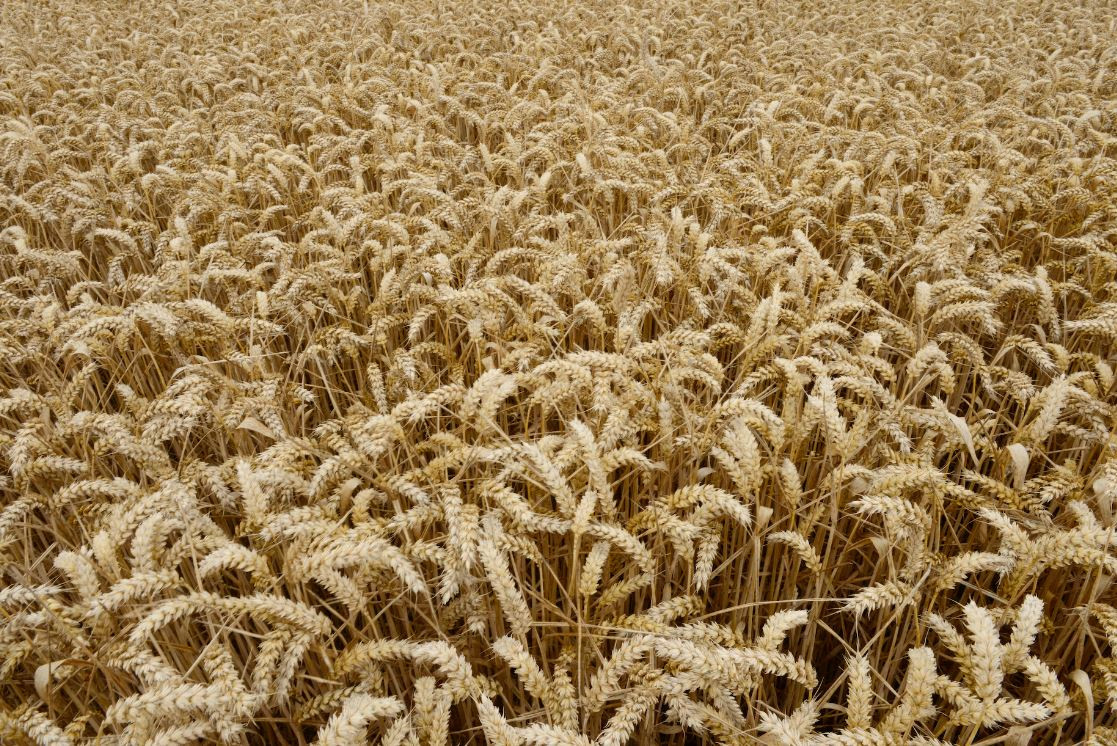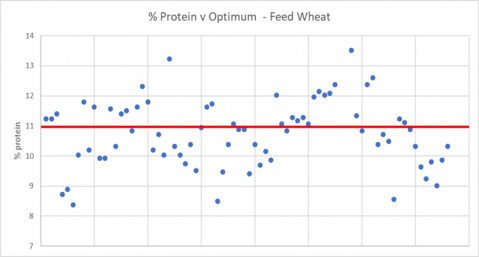Field grain analysis can help determine the success of your fertiliser programme
With harvest just beginning, now seems a sensible time to draw breath and assess the season before harvest gets in full swing followed in short order by establishing next year's crops.
And what a season it's been. Yes, there have been weather events to talk about, especially the dry April and for some also the first half of May and most of June, but these pale in comparison to the economic impacts we've seen in the last 12 months. No more so than in my world of fertiliser, where an initial new season price for AN back in June 2021 - at 81p/kg N (£280/t) - was considered by some to be too expensive, only to then rise dramatically during the season to an eye watering £2.68/kg N (£925/t) at the peak.
An increased awareness of BER
As the whole industry clamoured to understand the implications of this and what to do, the breakeven ratio (BER) concept was presented and discussed more than ever. Although it's been around for decades, many were hearing it for the first time as a totally new idea, mainly because it has never really come into play before.
Historically, the ratio has remained within a range of 4 to 7 over the years so there hasn't really been a need to adjust your N rate based on economics. That all changed this year when the ratio went up to 11, 12 or even higher for small periods of time, or when some unhelpful commentators suggested nitrogen would reach £4/kg! I do, however, feel certain things weren't discussed in enough detail for everyone to make informed decisions during this period.
Misconceptions with BER calculations
Firstly, your average price of nitrogen should have been the figure used to work out your BER to determine if more fertiliser purchases could have been justified – unfortunately, many just used the current price when making this decision, which wasn't really fair to the crops being fertilised. Secondly, opportunities to reassess BER as the grain price increased dramatically were missed by many. What was the right decision to cut back on nitrogen before Christmas when wheat was at £190/t potentially became the wrong decision when it rose to £250, £275 and so on.
Finally, for those who made a rate adjustment, it was important to consider what overall rate this was from and what the potential implications were. To me, the impact was often oversimplified to a single average potential yield loss, but we all know that an average hides a range of outcomes. Looking at the AHDB calculator for a 50kg/ha reduction in nitrogen, it predicts a 0.36t/ha yield loss. While I appreciate this is an average, in a replicated trial last year we saw a 0.77t/ha yield loss for that same reduction (200kgs/ha to 150kg/ha). I'm not saying everyone would lose that yield of course - far from it – but I think it's important to make the point that the yield loss is likely to be from in excess of 1t/ha down to absolutely nothing! For me, that was the missing piece of information behind the average figure.
Greater insights with field grain analysis
If we consider the range that I addressed above, wouldn't it be nice to understand which end you're most likely to be at? This is where I believe analysing grain from individual fields will help to give that valuable steer.
Last year, Frontier and SOYL Precision piloted an in-field grain analysis service looking at exactly that. Differing from our usual grain sampling service where we take samples from the heap and assess the best target market for your grain based on its specifications, the field grain analysis service provides a full-scale insight into your crops' nutrient uptake and performance.
The findings from our pilot
Some of the results we gathered from our pilot samples were quite sobering. Take our feed wheat results for example; the grain proteins ranged from over 13% protein down to just over 8% - at those two extremes you could argue the former has potentially received too much nitrogen and the latter not enough. Clearly there are other factors to explore to be more certain, but if I go back to reducing nitrogen rates, taking the same amount from both these scenarios will have had completely different outcomes. One is likely to have produce an identical yield, whereas the other may have produced quite a reduced yield.
I think that is powerful information to have at hand ahead of making decisions on nitrogen rates for next year's crops.
The benefits of analysing grain in the field
Following the success of our pilot, we've now rolled out this new analysis as a fully-fledged service. Using it will provide you with vital information that can be interpreted into meaningful, actionable data, equipping you with the insights you need to efficiently use nitrogen, cut costs and achieve better yields and higher quality crops.
The benefits of having individual fields analysed not only allows you to receive guidance on nitrogen rates, you'll also find out your exact P & K removals from the grain so you can tweak any maintenance applications. Additionally, you will be able to understand if your crop was potentially deficient in any nutrients, macros (N, P, K, S & Mg), and the micro-nutrients.
Looking further forward, at next year's harvest you can use this service to assess the success of any changes you make to your nutrition programme next spring. It is, I believe, the ultimate end-of-year report card. With this information in mind, I would strongly encourage you to have a selection of barometer fields analysed this harvest.
For more information about our new field grain analysis service, including the full list of nutrients covered, how in the information is interpreted, eligible crops, pricing and how to book, visit the SOYL website or email This email address is being protected from spambots. You need JavaScript enabled to view it.. Alternatively, you can speak to your local Frontier or SOYL contact if you have any questions.
As a subscriber, you’ll receive email alerts each time a new blog is published so you can always stay updated with the latest advice and insights from our experts






Comments